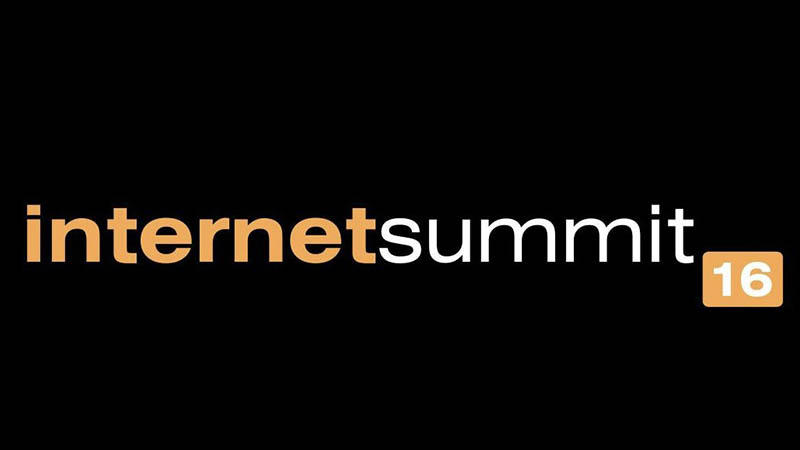November 26, 2016
9 Epic Takeaways from Internet Summit 2016

Digital marketing is an ever-expanding field – it seems like there’s some new, nifty tactic, software, platform, et cetera, et cetera, making an appearance in our industry every day. So, in order to be the best marketers we can be, and to consistently provide the highest quality of services to our clients, we need to stay savvy on what’s happened, what’s happening and what’s to come. Thankfully, marketers have an insatiable appetite for gaining knowledge and one of the best ways to fuel this hunger is to regularly attend conferences.
And that’s why we sent Mandy, Shannon and Channing (AKA #ManShanChan or the “Dream Team”) to Internet Summit 2016 in Raleigh, North Carolina.

For those of you who are unaware of what the two-day long trending topic “#ISUM16” on Twitter was, here’s a recap: Internet Summit is a wonderfully informative, thought-provoking annual internet marketing conference that’s jam packed with sessions and keynotes from experts in the field. The topics covered at this year’s event ranged from (but were certainly not limited to) search engine optimization, analytics and metrics to content strategy, digital storytelling and visual marketing.
Anyway, here’s nine of #ManShanChan’s key takeaways from #ISUM16:
Quality content alone cannot overcome a competitive landscape.
Rand Fishkin, Moz
If you create the most amazing content but don’t put it into the right places for your audience to see it, your amazing content is worthless. You need to put just as much effort into properly targeting your audience on the channels they are using as you put into creating exquisite content.
Assume no one cares.
Hassan Ali, The Onion
So, if no one cares, consider what makes them care. What points can you hit on, what verbiage, what theme, would cause them to care about your brand?
If you cannot define your problem and map out your path to success on a piece of paper, no amount of technology will help you.
Dave Fryer, Domo
Before you start to research and accumulate data, you need to know what you are looking for. You should first define a problem and the impact of the problem. Then, figure out what steps you can take to solve it and where the data lives that will help you solve the problem. Finally, you can start to research and pull data to help uncover the answers to your problem.
98 percent of consumers are more inclined to purchase after an experience with the brand.
Brendan Walsh, Mole Street
Experiential marketing is a strategy that invites and encourages an audience to interact with a brand. When you create an experience for consumers to enjoy, the consumers will not only be more inclined to make a purchase, but they also document their interaction by taking pictures and posting them on social media. Experiential marketing creates hundreds of pieces of valuable content between capturing content at the event, as well as collecting your audience’s shared content.
We create friction, but how do we change?
Michael Barber, barber&hewitt
Friction is a negative characteristic, such as poor customer service or an inconveniently designed home tool, that inhibits a consumer’s progression within a brand’s sales cycle. We’ve all experienced some kind of friction and we’ve all participated in its occurrence, but how can we begin eliminating, or reducing, points of friction? Michael provided us with his five C’s for preventing this discomfort:
- Contextual: Respect other people’s mediums – be aware of how and where you’re communicating with them.
- Compassionate: Empathy is required, always – spread kindness and actively go above and beyond for your consumers.
- Connected: Enable seamless experiences – both online and offline.
- Convenient: Make it too easy to do business with you – use analytics to know what your customers are shopping for and personalize their experience (i.e. a clothing brand sends personalized emails to their shoppers featuring shirts in the size they consistently order).
- Consistent: Same experiences, always – it doesn’t have to be perfect, but the overall experience and products should remain the same.
Social media is the modern day smoke break.
Mathew Sweezey, Salesforce
Social media platforms are used as mini-breaks throughout the day for a majority of people. So, make sure your posts are eye-catching and interesting, informative or entertaining (or, you know, all of the above if you can make it work).
How we make decisions is not always consistent with logic.
Kelvin Kwong, Jawbone
When someone tells us we have to do something, our natural immediate reaction is to say no. When we are reminded we have a choice, we are more inclined to say yes. Kelvin presented a great case study where someone dressed in average clothing approached strangers and asked “Would you have some coins so I can take the bus, please?” Only 10 percent of people were willing to dish out some spare change. In a second scenario, the individual asked the same question but added “…but you’re free to accept or refuse.” Once people were reminded the decision was theirs, the number of people who offered their coins increased to 48 percent. He further explained: the smallest details matter in how an audience will react.
Start at the top and work your way down from there.
Mike Albanese, In My Own Head
Organize your ideation and presentation process like a ladder: begin at the top with your craziest ideas and work your way down from there. After all, if you start off with your most “out there” concepts, your ideas that are a little milder have a better chance of funneling through.
Everything you do can be content.
Chris Moody, GE Digital
An important point to keep in mind as you go about your day: virtually anything and everything you do has a chance to become some form of content. So, in reality, you should never struggle for content ideas. Turn those meeting notes into a blog post, create an infographic from your lunch and learn, develop a video explaining your process, etc.
BONUS TIPS:
Below, you’ll find some additional takeaways. We didn’t have quotes to introduce these, so, for formatting reasons, we’re adding these as little bonus nuggets:
- When you’re willing to take a risk, focused on the message you want to convey and the feelings you want to leave your audience with, three minutes is more than enough time to make a great video. Also, you will at some point have to hear a ton of ‘no’s’ before you hear one yes, so, don’t give up! – Morgan Spurlock
- Reminders for a good user experience on your website from Michael Salamon, Lousy
- You can’t be a tourist – don’t be the last to adopt new technology/practices.
- Don’t copy – there will be nothing unique about you with this approach.
- Be smart about testing – don’t test things that don’t matter.
- Clean your ‘room’ – tidy up a huge navigation menu.
- Listen to your customers – they’re telling you things all the time, be sure you are being receptive to their input.
- Don’t sacrifice design over theme – WordPress, Wix, Joomla, etc. makes great themes but don’t be afraid to do something a little different.
- Use real data/content – design for the data/content that needs the space. Don’t choose to use handpicked content just because that’s what fits/looks nice.
- Know thyself – don’t be ignorant of your own product.
- Always be iterating – don’t be afraid to update or modify your designs.
- Mobile is the front door – the majority of people coming to your site are likely on a smartphone.
Have any thoughts on or additional takeaways from Internet Summit 2016? Get in touch so we can chat!




